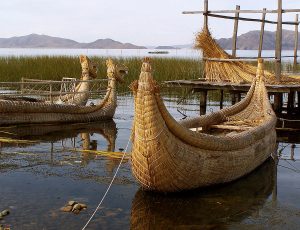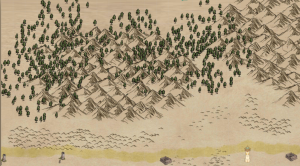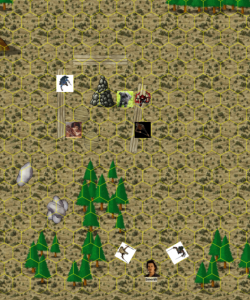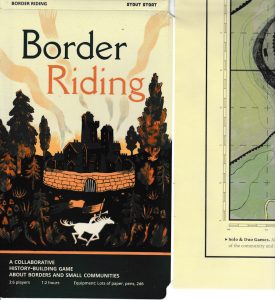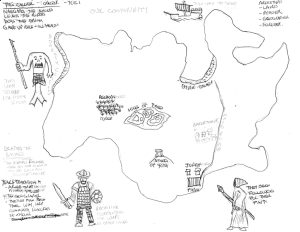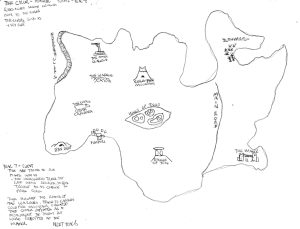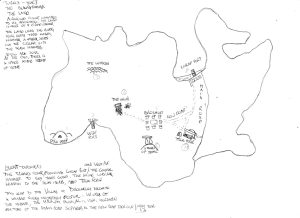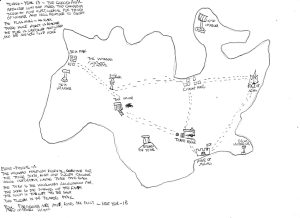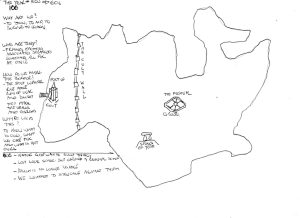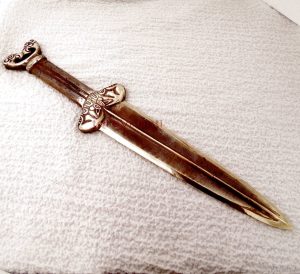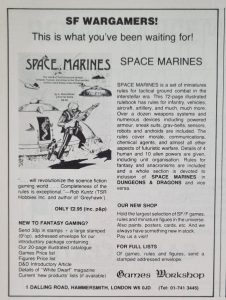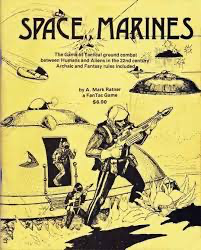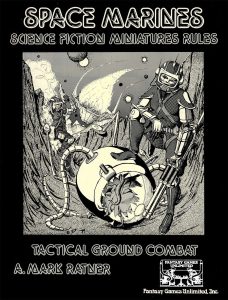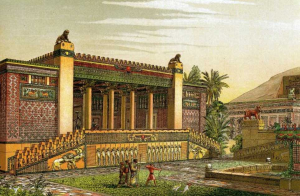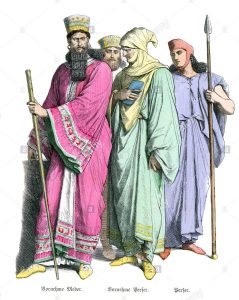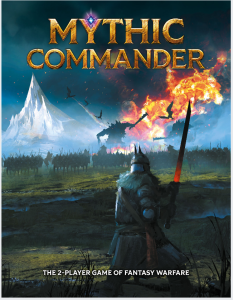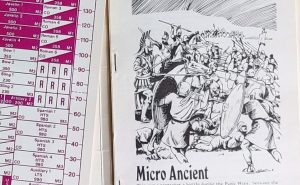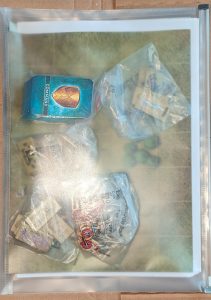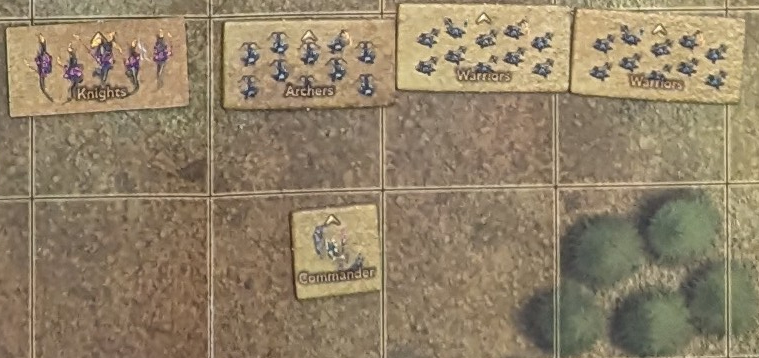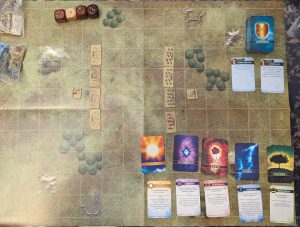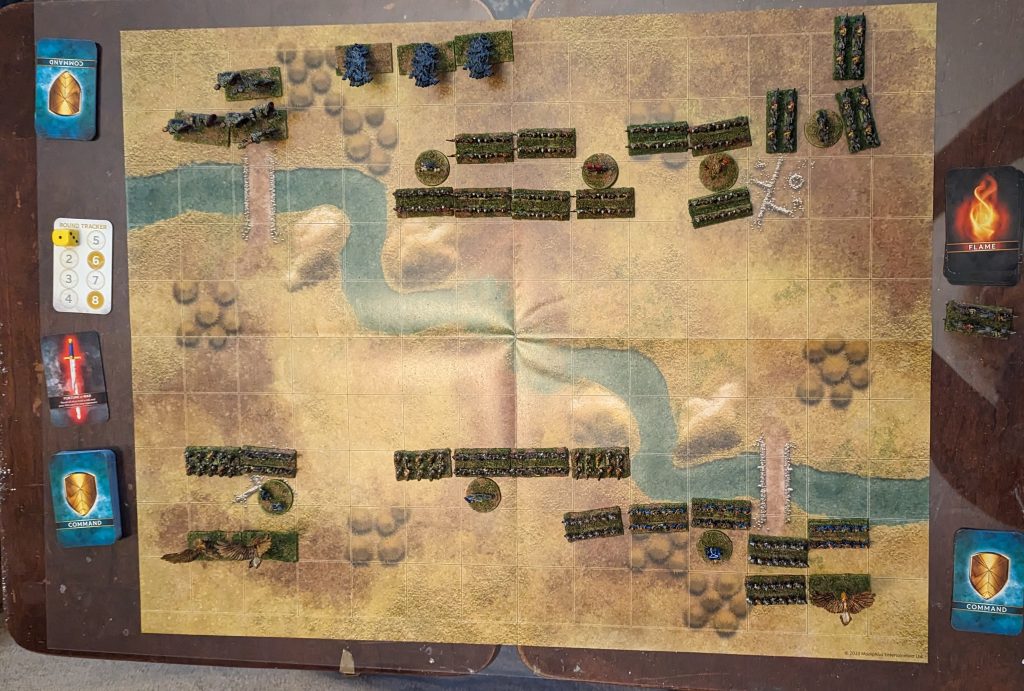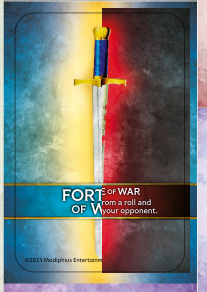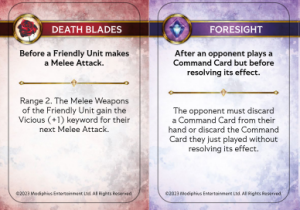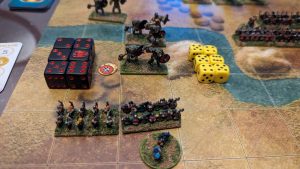This adventure is an adaptation of Losing Face by Kevin Kulp, for Swords of the Serpentine. You can get it as Pay What you want from DrivethruRPG here.
Having placed the faceless woman with the Temple of the Cold Ones, the group, now joined by merchant prince and assassin, Jalabu the Fox, returned from various side trips along the way.
The group then headed to the Palace of Agents in the administration centre for the city, like most situated near the magistrate’s house and court, the main barracks and the lesser temple and stores.
The route skirted the edge of one of the markets, a bustling, cosmopolitan place where travellers met to do deals, build contacts and learn secrets. Then a shout “Jalabu! Friend Jalabu!” And two men strode towards the group.
Beaming, Jalabu the Fox, unable to place these two, but he had met so many in his travels, smiled and started to speak “We;; hello…” only to be cut off as yhey ignored them and started speaking to Farshad.
Farshad and the two had a social conversation of small talk and good wishes, and promises of deals to come, with frequent mentions of the name “Jalabu” directed at Farshad. Attempts by the `Fox to speak where hushed with and a word and a a wave from a smooth and confident Farshad, leaving Jalabu stunned and confused as he found his name being bandied around in connection with potential deals that would make his name known across the civilised world. As that name was attached to Farshad, that added to the Fox’s concerns by the time the merchants took their leave.
In reality this was true of the player also. Andy had been unable to make the last few sessions and wasn’t sure he’d make this one, so hadn’t read the last write-up. He had no idea what was going on and was speechless, and the whole situation did bring some hilarity to the players.
At the Palace, a rather grand name for some utilitarian buildings and accommodation, the group found themselves amidst a bustle of agents and scribes, but they were soon taken in to see the officer of the watch, who gave them some refreshments and heard their story from meeting the children, to the discovery of the faceless woman. The officer of the watch, Lutf, had a scribe take notes but, rather than assuming responsibility, asked the group to keep with it, for at least a couple of days, as the agents under their command were busy not only with security for the Epic at the Grand Theatre, normal criminal activity but also rumours of Zhuezhi activity at the border.
The group agreed. They were taken by accommodation by one of the scribes, who seemed to have been assigned as a guide, and they took an hour or two to freshen up. With regrets the group left armour behind, the city is not at war. Everything settled, they asked the scribe about perfumers, where might expensive and custom scents be found, They were taken back to the market, past less exclusive sellers of perfumes and scented resin and wood, to a more up-market area, an enclosed street guarded to keep out thieves and riff-raff.
However Utana’s dress sense, bearing and voice overawed the guards, and the group were ushered into the so called “Street of Scents”. Some more high handed dealings with merchants got them to The Red Bottle”, owned by Zuanada, the perfumer who made up the scent and, thanks to his own training with scents, though mostly in the field of detecting positions, Jalabu was able to home in on just the right scent. It was part of a group of scents made for an old family of the city, one from the previous rulers of these lands, before the coming of the Mada.
This exact scent was, however, created for Fernskundeh, a Priest of the Cold Ones who is famed for her beauty but. More importantly, her singing. It is she who plays the part of the god Mawet in the epic tonight celebrating the city. Hers is the role of the god Mawet, revered here as a feminine figure, and as patron of the city.
With this knowledge, they head back to the Temple. Finding the junior priest they had collared before, despite the nervous priests attempts to be unnoticed, give the horrific situation they landed the Temple with last time. The group was able to seek another audience with the Librarian, They passed on the information regarding Fernskundeh, but were told that she would be at the Theatre. The Temple will send people down there to investigate, but please, the Agents should continue.
Fetnah was intrigued by the vision communicated to her by the spirit of Tanima
I saw a vision of the Place of Old Grief, a group of islands where memorial stones are placed. It is the largest of the islands, there is a plinth with nothing on it, the plinth are surrounded by statues in a ring, the statues all face the plinth, it is very distinctive. I do not know why it is significant.
And that was the next place visited by the group. Taking boats to the quiet area, a mix of neglected and tended, depending on the family devotion to their ancestors. This island, thought large, is sheltered by others, and the water sluggish and in places brackish.
It took a while, but a place matching the description was found though, instead of a bare plinth, a statue of a dog headed individual clad in painted robes was on it. The group were mystified by it, and threw rocks and stones in its general direction, even tried prodding it, until, despite all these inexpert interactions failing to make contact, the individual revealed itself as Eblan, a Rishalkibu, a reclusive type of mortal, often nomadic, some are of studious mind and settle as hermits, tending the spirits and often in a relationship of both servant and student,
Eblan has a tale to tell in answer to questioning by the group
This city has many secrets, and there are killers that will dispose of your enemies for money. One was here two nights ago, meeting a client. Both were hooded and cloaked, but he heard mention of the Epic of The Gods, and of Mawet, patron of Khanedarya, being held. The assassin seemed supremely confident.
With this information imparted, and no other specific details having been overheard, Eblan seemed disinclined to hang around those who had been throwing rocks at him, and so he went off. The group noticed that the island seemed quieter, empty, though they found close by the family memorials of Fernkunsdeh’s family, surely not a coincidence that this was close to the meetings place.
It wasn’t just other mourners who had quit the island, the boatmen had gone how were the group to get off the island>
That point may however be moot, as from the surround come some armed Zhuezhi, knives out, looking very unsympathically at the group.
And there we left it/

